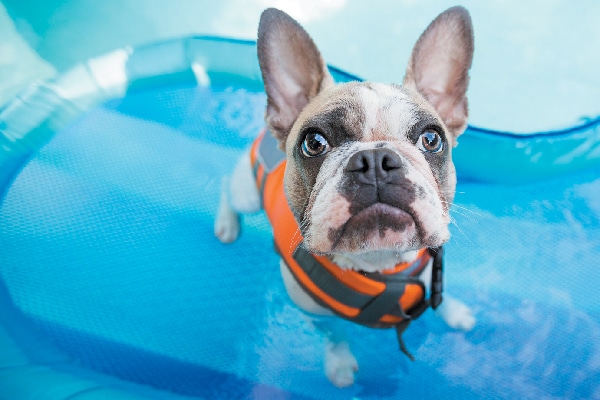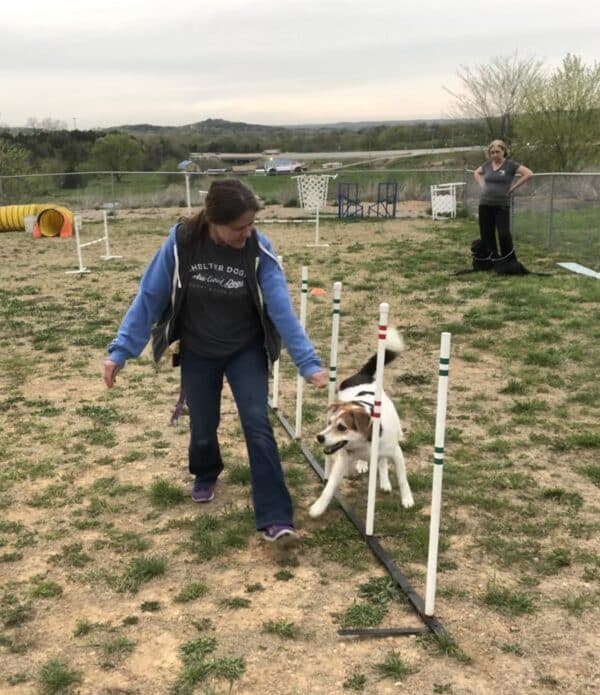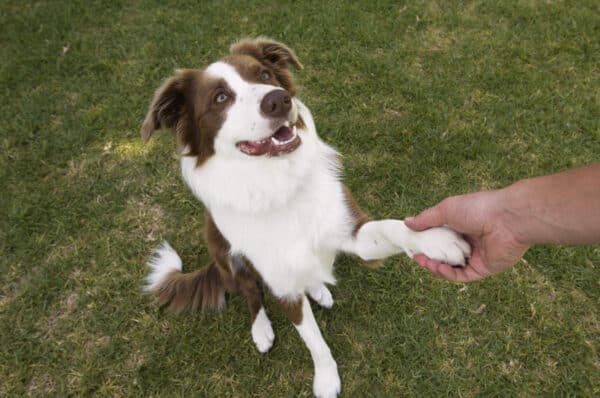It came as a shock to my young client that her Labrador Retriever came into her life not loving to be in the water. How could this be, she wanted to know? It’s a Lab! All Labs love water!
Not true, as it turns out. That’s like saying, “All humans love to swim in the ocean.” I, for one, can’t stand to be on beaches. While I love to look at photos of beaches and I do love the sound of waves crashing on the seashore, you cannot pay me enough to sit on a beach.
How to help a dog love the water
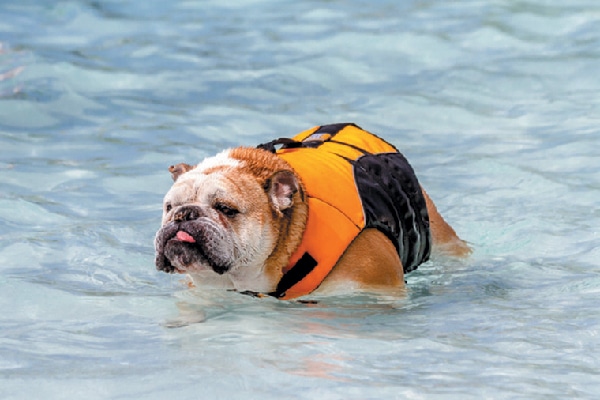
Could you make me enjoy sitting on a beach? Not likely. I’m human, and I can speak up and decline to join you out there sweating, with sand and wind on your supposedly happy face. Dogs have no such voice, so we have two options to help water-shy dogs.
Option 1:
Accept your dog for who she is, and don’t expect that she’ll eventually love water if you know she hates it or is terrified of it. And never, ever force a dog to go into water. It’s fear inducing and cruel to throw a dog into a body of water to “teach it to swim.” My mantra when it comes to training animals is: If you would not do it to a human toddler, don’t do it to a dog.
Option 2:
Help your dog learn to love — or at least like — water. We can help animals overcome their fears, but it takes patience. And it means we humans have to be guides and not mean screaming machines.
Here are some tips for helping water-phobic dogs
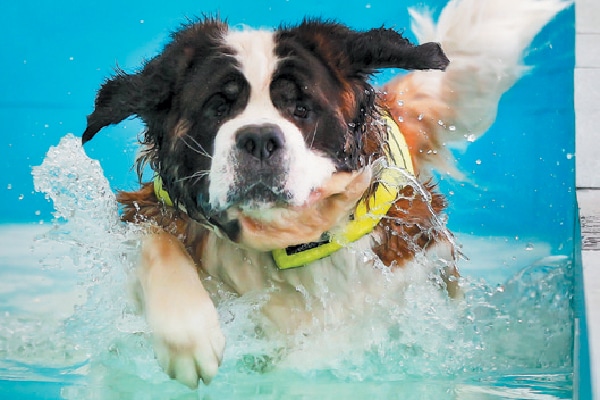
Gather your dog and some truly novel and tasty training treats (reinforcers). Find a quiet body of water like a kiddie pool in your backyard. Pick a day when nothing in the past 24 to 28 hours has overstressed your dog. For example, don’t move to your new dream home that has a pool and the day after moving expect your dog to paddle her way around the pool if she’s never seen one before.
I often take a comfy lawn chair and a book, and simply sit beside the body of water I want the dog to check out. In a securely fenced-in area, I allow the dog to go at her own pace of exploration regarding the water. Believe it or not, the more often we can set up situations for the dog to make a good choice (the choice we wanted her to make to begin with), the more resilience and curiosity we create in our dogs — and the more peace we create between the two species.
If I see that the dog is quite curious about the water and isn’t shaking in fear, I play in the water myself while talking in a calm, happy voice. If the dog likes to chase a ball, I’ll take a ball into the water with me and throw it away from the water for the first few throws. As the dog gets comfortable bringing me back the ball near the water, I step a few feet into the water and highly reinforce the dog with praise and treats if she brings me the ball with her feet getting wet in the water. You see, play and fear are incompatible behaviors, so if I can turn the water into happy hour for the dog, I win and the dog wins, too.
What if your dog is truly scared of water?
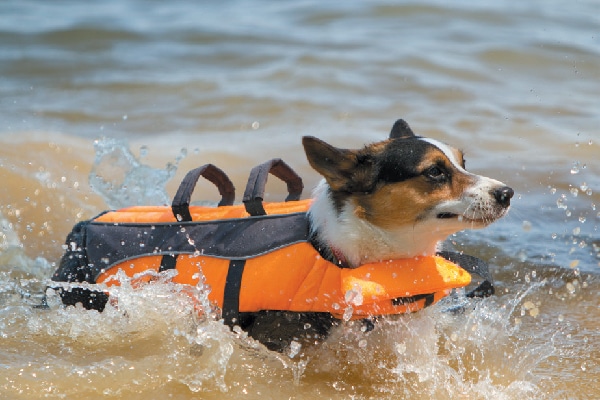
Some dogs are indeed terrified of water. Something scary could have happened to the dog surrounding water before she came into your life, or it could be a dog who is simply unsure around new stimuli. In this case, I slow down my approach to the water and go at the dog’s comfort level. Sometimes this means I put the dog on a leash and work 100 yards away from the water source at first.
At the beginning stages of training, I enthusiastically say “Yes” and reinforce with meat or cheese training tidbits every time the dog looks toward the water. I only reinforce for looking at the water and not for any other behaviors. If the dog is comfortable enough to continue eating, I walk 10 steps toward the water, happily talking and encouraging the dog forward. I stop and wait for the dog to look toward the water, and when she does I mark it with “Yes!” and she gets another tidbit. I might also use play here for a ball-crazy dog — she looks at the water, and she gets a few seconds of playtime.
I continue getting closer and closer to the water, and I make sure the dog’s surroundings are calm and not hectic. In other words, a busy dog park with potentially amped up dogs and lots of excitement is not the most conducive learning environment, especially when working with a fear-based behavior.
The bottom line on easing your dog’s fear of water
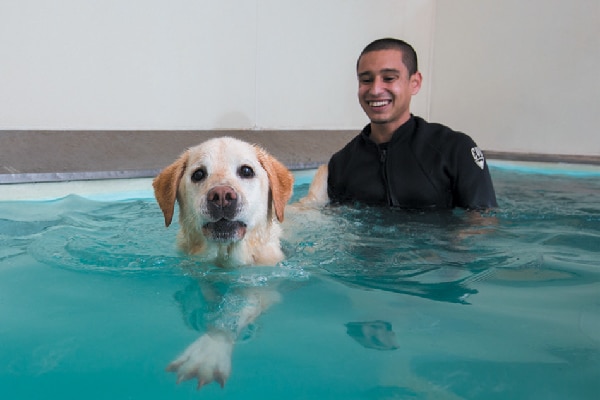
Move slowly, steadily and never with force, and soon enough you’ll have set your dog up for water success. Remember that with fear-based behavior, it’s crucial to go at your dog’s comfort level and not your own. It’s far better to get it right by going slowly so you and your best friend can enjoy water together for the rest of your buddy’s life.
Plus, learn how to keep your dog safe from these common water hazards this summer >>
Read more about summer and dogs on Dogster.com:
- Dealing with a Dog That’s Afraid of Water? Try These 4 Proven Techniques
- Summer Gear for Dogs Who Love the Great Outdoors
- 9 Tips on How to Cool Down a Dog
Annie Phenix, CPDT-KA is a professional dog trainer based in Utah. She is a force-free trainer specializing in working with troubled dogs. She is the author of The Midnight Dog Walkers: Positive Training and Practical Advice for Living With a Reactive or Aggressive Dog. For more information, visit phenixdogs.com.
July is the CHILL ZONE on Dogster.com! Learn how to keep your dog cool, calm and collected this summer with articles on preventing summer mishaps, staving off stress and more.
Featured Image Credit: Sarah McGraw Photography.

